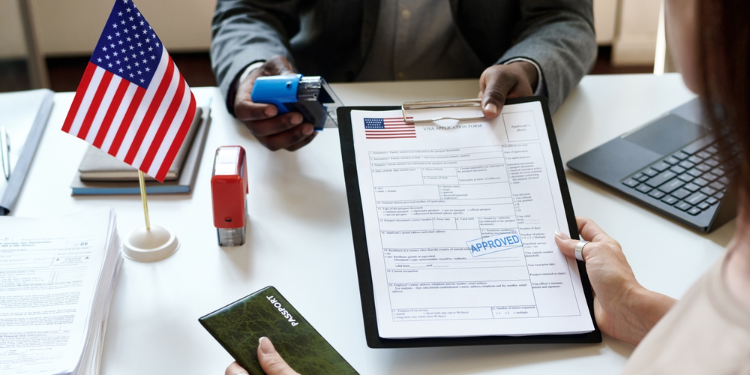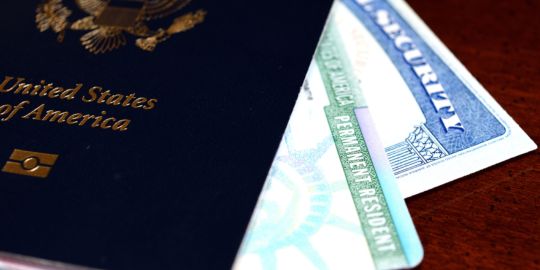Labor shortages and increased immigration
Breaking a new record, the US State Department reports that between October 2022 and September 2023, 10.4 million non-immigrant visas were issued. Notably, 600,000 international students secured student visas, a level not seen since 2017. International students remain a substantial financial boon for the United States, contributing an estimated $38 billion to the economy annually. Among them, Indian students lead the way, obtaining over 140,000 visas. Additionally, there's another record in the making as the number of visas issued to African students is on the rise, reaching 40,000, including 9,700 for Nigerians.
Despite the stabilization of the labor market, labor shortages continue to impact the US economy. The cause lies in an immigration policy inherited from the Trump era, which significantly curtailed immigration between 2016 and 2019. The situation has been worsened by the ongoing COVID-19 pandemic. In 2021, the foreign population was projected to be only a quarter of what it was in 2016. As of 2022, the labor shortage remains a critical issue, highlighting the crucial role of foreign labor in sustaining the economy.
The US State Department recorded 442,000 visas issued for temporary and seasonal workers, primarily in sectors facing significant labor shortages, like agriculture. Additionally, 590,000 visas were granted to skilled foreign workers, mainly in the technology and healthcare sectors. The airline sector has not been overlooked, as 365,000 visas were issued to airlines and ship crew members.
How has US immigration evolved?
Contrary to expectations and his own statements, former President Trump did not halt immigration to the United States. Instead, he followed a path similar to the Obama administration's, favoring applications from skilled immigrants. This approach aligns with the strategies adopted by other nations like Canada, Australia, and the Netherlands, to attract foreign talent. However, there has been a "Trump effect" on immigration, marked by nearly 500 measures aimed at restricting it, including the end of family reunification and a freeze on refugee admissions. Consequently, the number of permanent residents is projected to decrease by 13% between 2016 and 2019, with an even steeper decline of 23% of student visas issued.
The return of international students
Talent is returning to American universities following a challenging year overshadowed by COVID-19. While the United States may have lost a few points to Canada, it remains the leading destination for international students. According to the Open Doors 2022 report, compiled by the Institute of International Education (IIE) with support from the US State Department's Bureau of Educational and Cultural Affairs, a total of 948,519 student visas were issued for the academic year 2021-2022. This result surpasses the pre-pandemic period when over one million visas were issued, representing a 4% increase from the 2020-2021 academic year.
During the 2019-2020 period, Chinese and Indian students were the most prominent groups, accounting for 38% and 20%, respectively. The number of Chinese students has been rising steadily since the 2000s, starting with nearly 60,000 students in 2000 and reaching just over 370,000 in 2019. According to the Institute of International Education (IIE), Chinese students contributed $15.9 billion to the US GDP in 2019 alone.
COVID broke the momentum. According to the US State Department, the number of visas issued to Chinese students dropped from 90,310 in 2021 to 61,894 in 2022, marking a significant decrease of 31%. However, several other Asian countries have been experiencing substantial increases in the number of student visas issued: Nepal (+92%), Vietnam (+84%), Bangladesh (+86%), and Japan (+80%). Regarding the increase in student visas issued between 2021 and 2022, Asia saw the most substantial rise (+30.1%), constituting 12.7% of the total number of international students in the United States. This growth surpassed South America (+31.7%, up 6.6%) and Africa (+27.5%, up 5.9%).
More and more foreign workers
The impact of the Trump administration was evident. In 2016, net immigration was 1,449,371. It gradually declined to 1,377,630 in 2017, 1,200,796 in 2018, and further to 1,158,444 in 2019. The lockdown measures in 2020 led to a significant drop, bringing it down to 575,560. With Biden taking office, companies and future expatriates anticipated a change in direction. In 2022, net immigration saw a rebound, reaching 998,540, marking a remarkable 77% increase compared to the pandemic period (source: World Bank). This signifies the first time since 2016 that migrant flows have returned.
But the labor shortage is weighing on the economy. Without the impacts of the Trump administration and the Covid pandemic, the US could have welcomed 3.4 million foreign workers. Faced with significant labor shortages since the global health crisis, businesses are urging the government to take action. In 2022, the Biden administration "temporarily" simplified the procedures for obtaining work visas, including the popular H-1B visa. Since then, the job market has experienced fewer disruptions than the challenges during the recovery from the pandemic (2021-2022). Resignation rates have returned to pre-Covid levels, along with a rebound in immigration. According to Goldman Sachs, 115,000 green cards and 230,000 work visas were issued in 2022.
However, labor shortages remain a challenge for the United States, primarily due to an aging population. In some states, the senior demographic is a particular concern, leading companies to deploy various strategies such as wage hikes, bonuses, and childcare assistance to attract workers. Workers find themselves in a strong position, and economists are increasingly relying on immigration to sustain growth and demographic stability.
Useful links:
US Citizenship and Immigration Services (USCIS): working in the United States















